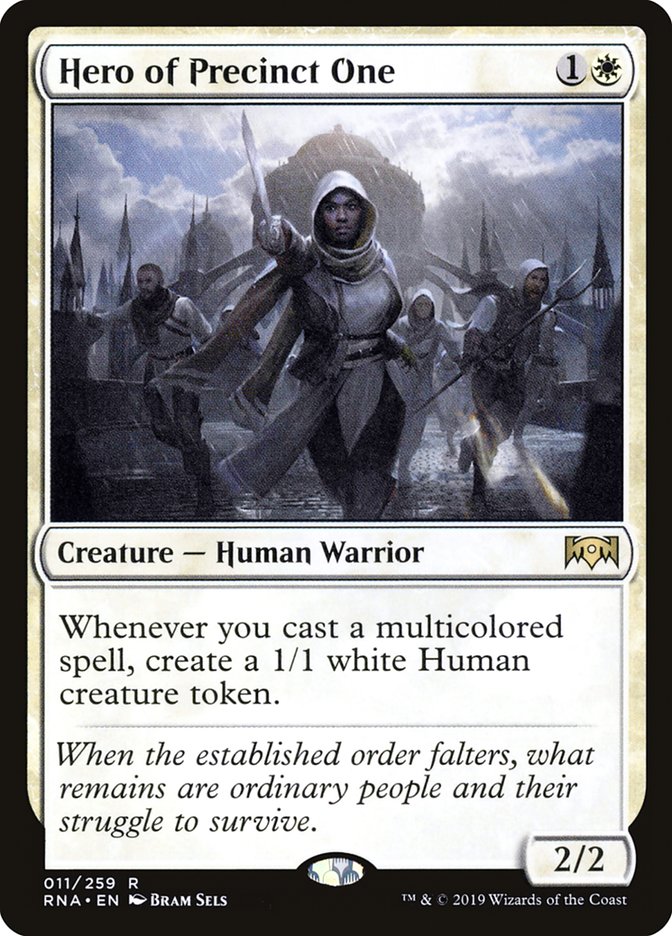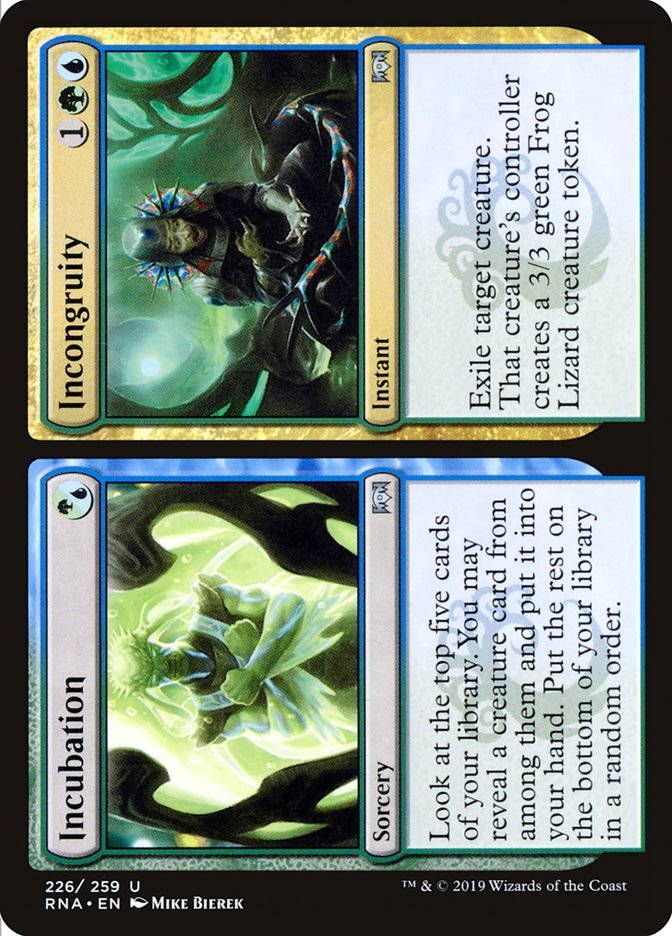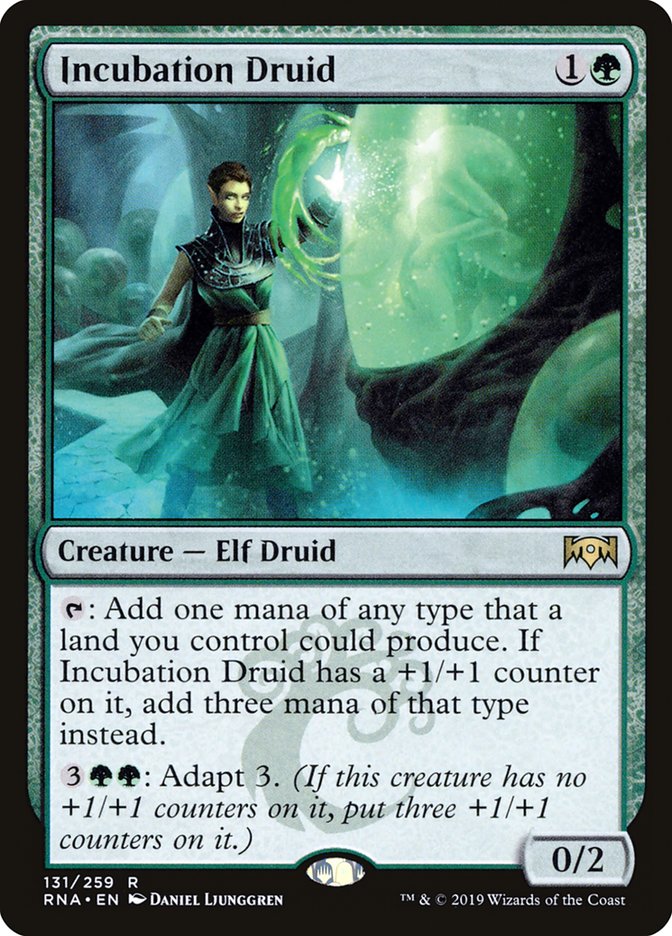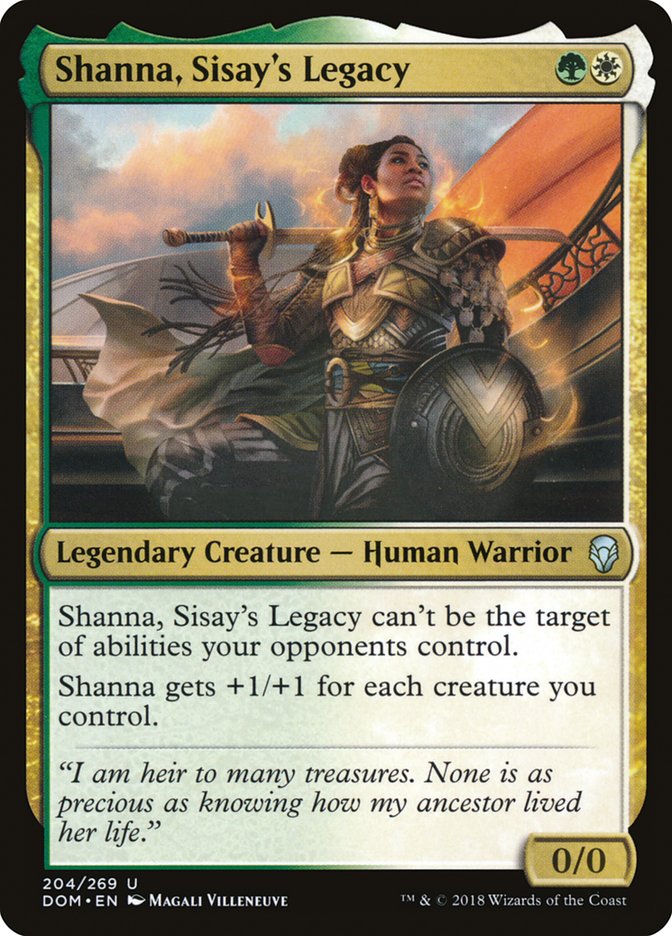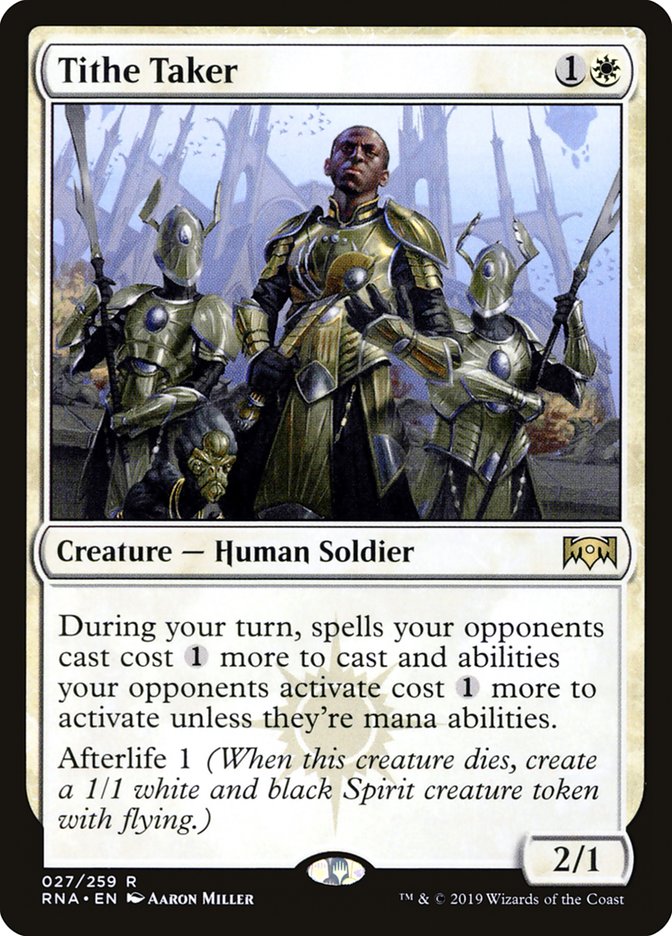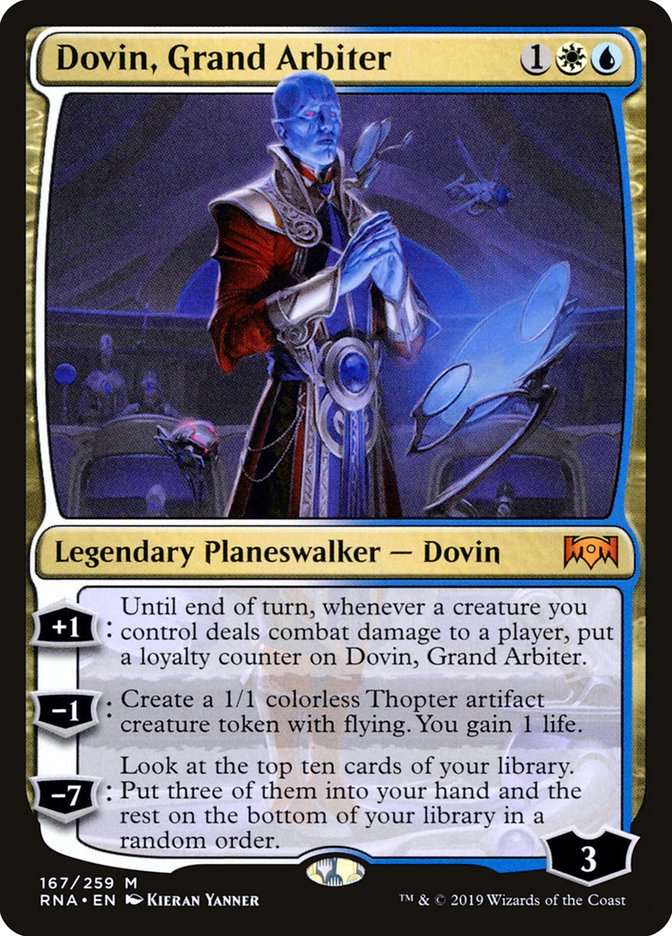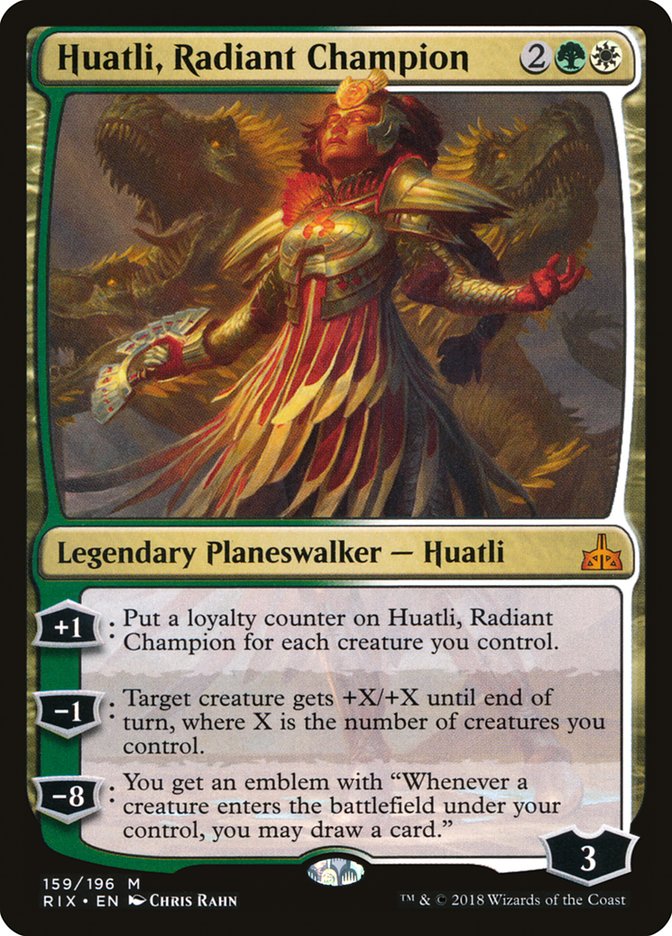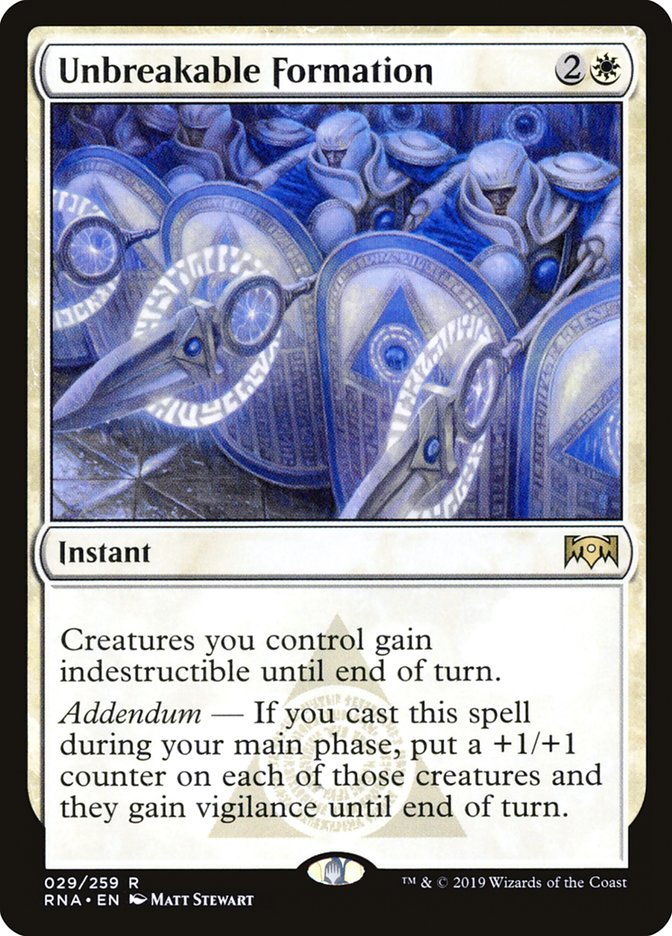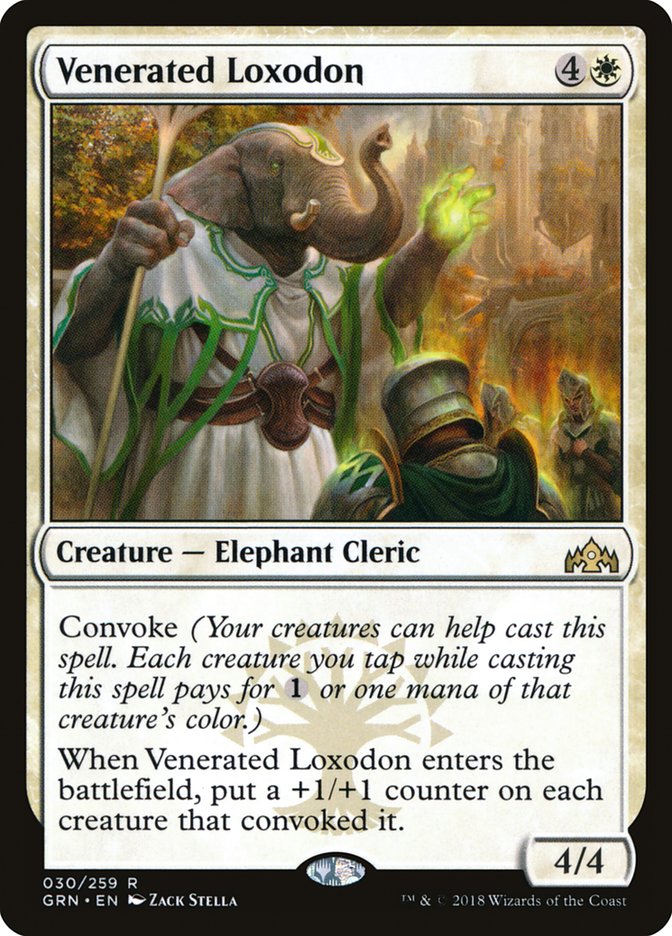Despite the fact that I’ve ended up playing mono-white and Selesnya decks at a few GPs recently, I still just dismiss most Selesnya and Bant decks that I look at. I’m not really sure why; I think it’s just kind of a typical bias that’s existed for years against decks that are almost all permanents. These days, the permanents are so good and there are so many different types that these decks really deserve respect.
While I’ve written a lot about token decks, in practice, most of the decks I’ve generally gravitated toward in testing were decks with a lot of spells and a few creatures, like Rakdos Midrange. I’ve tried to play a little with everything, though, and even after winning my first few matches with Bant Tokens, I thought it was a fluke and didn’t take it seriously until I came back to it a few days later and kept winning.
Wednesday morning, fourteen hours before we had to submit our decks for the Mythic Championship, I told my team that I was interested in playing Bant Tokens and thought it was weird that no one else had tried the deck and that other people should play some games with it, and was answered that it would be a poor use of time for anyone else to invest any time on the last day to trying it because it was too late to get enough data to be confident. I still liked the token decks more than anything else, so I decided to spend the day trying various builds myself, but Matt Severa and Quinn Kiefer joined me.
I tried a lot of approaches and I think there’s merit to each.
I started with Bant because I liked the idea of maximizing Hero of Precinct One with multicolored spells that replace themselves for a single mana – Flower and Incubation. Incubation puts pressure on you to play as many creatures as possible, which a token deck might not otherwise want to do because there are a lot of good ways to make tokens that aren’t creatures, but Incubation is great, so I thought it was worth building around.
Creatures (25)
- 2 Shanna, Sisay's Legacy
- 2 Shalai, Voice of Plenty
- 3 Emmara, Soul of the Accord
- 3 Venerated Loxodon
- 3 Trostani Discordant
- 4 Deputy of Detention
- 1 Hydroid Krasis
- 4 Hero of Precinct One
- 3 Incubation Druid
Planeswalkers (1)
Lands (23)
Spells (11)

With 25 creatures in the deck, Incubation will miss just over 5% of the time, which is honestly more than I’d like, but all things considered, I think it’s worth it. Between Incongruity and Deputy of Detention, I can get away with skipping Conclave Tribunal in the maindeck, which is necessary to play enough creatures to support Incubation. Aside from giving me a free trigger with Hero of Precinct One, Incubation also helps make sure I play a good two-drop on Turn 2 every game and also helps find the important payoff creatures later.
Incubation Druid is an uncommon inclusion in token decks, but it pairs really well with Venerated Loxodon, which is an unusual way to get a counter on it so that it starts tapping for three mana, and then it pairs really well with Shalai as a mana sink. The most incredible game I played in testing involved Shalai activating twice a turn with multiple Incubation Druids against a Biogenic Ooze on the other side of the battlefield that was making several tokens a turn, while I couldn’t find a Deputy of Detention. I ended up just waiting until all my creatures were bigger than all of the Oozes and then attacking with everything.
I don’t like Shanna, Sisay’s Legacy very much, but it was an addition specifically to block against white decks, where it’s particularly effective because it’s immune to Baffling End, Deputy of Detention, and Conclave Tribunal. Sometimes the white-based aggro decks just come out too fast for the token-based decks, and I think Shanna is a great way to improve those matchups a lot without hurting too much in other spots. Also, between Incubation wanting creatures and Hero of Precinct One wanting multicolor cards, it’s pretty easy to add any multicolor creature to the deck, like Hydroid Krasis, which is totally off-plan but potentially nice to find with Incubation when I have powered up Incubation Druids.
The arguments against the approach: Planeswalkers are strong and the pressure to keep the creature count this high is a real cost. The blue splash isn’t free, as you end up taking damage off your lands and sometimes you need to mulligan or have too many lands enter the battlefield tapped. Incubation Druid is off-plan – it doesn’t make sense to play a creature with bad stats that can tap for mana if any creature can tap for virtual mana because of convoke.
Each of these arguments offers a justification to build the deck differently. If we’re open to playing three colors but we don’t want to support Incubation so that we can play cards like History of Benalia and Dovin, Grand Arbiter, I’d end up with a deck like this:
Creatures (13)
- 1 Shanna, Sisay's Legacy
- 3 Emmara, Soul of the Accord
- 2 Venerated Loxodon
- 3 Trostani Discordant
- 4 Tithe Taker
Planeswalkers (5)
Lands (20)
Spells (22)

This deck is better at going wide quickly, which allows it to take advantage of Legion’s Landing and makes it better at convoking. This makes Conclave Tribunal a good fit, which works well because we now have other threes we’d prefer over Deputy of Detention and we don’t want to play Incongruity if Incubation won’t hit reliably enough for us to want to cast it.
Tithe Taker takes the place of Hero of Precinct One because we have fewer triggers and we’re looking to play a more aggressive game, and Tithe Taker is a better attacker because your happy to trade with it, whereas you don’t want to trade with Hero of Precinct One. It’s also much better at defending planeswalkers just because it’s likely to stay on the battlefield when your opponent would use a removal spell on Hero of Precinct One. Tithe Taker into Dovin, Grand Arbiter is a great curve because the Tithe Taker will help make sure that Dovin resolves and then will do a good job blocking to protect Dovin or attacking to power Dovin up.
Huatli, Radiant Champion is a card you may not have been expecting to see, but it’s really impressed me in this archetype. With so many ways to make tokens, it’s pretty common that you can play it and plus it up to eight or more loyalty immediately, where your opponent needs to answer it the next turn or you get an emblem.
The emblem is remarkably close to “draw your deck” in that you can usually spend all your mana every turn after you have it, since so many of your cards draw multiple cards. The -1 ability is also very good, since you have so many creatures and some of them have flying or lifelink, which makes them very good to pump. The problem with Huatli is that it’s basically the worst possible card when you’re losing. If you don’t have creatures on the battlefield, it really has no impact on the game, but I think the ceiling is worth it if you have a lot of tokens in your deck.
It might seem a little odd to see a mix of Venerated Loxodon and Unbreakable Formation because they serve very similar roles (putting counters on all your tokens), so one should probably be better. Venerated Loxodon is better when you don’t have anything else, or if you only have one to two creatures, because the 4/4 itself can be reasonably good; this makes it better than Unbreakable Formation against most red decks, for example.
Unbreakable Formation is better than Venerated Loxodon if you have a very large number of creatures, for example, the turn after you’ve cast March of the Multitudes. It’s also better against sweepers as a counterspell, and better generally against decks that lead to a battlefield stall where you might not be able to tap your blockers to make them bigger, but you can get in a nice free attack with Unbreakable Formation. I think the cards in total are a similar power level and I prefer a split, but I could certainly see history showing that one is just enough better than the other that it should always be the first one played.
You may notice that this deck is splashing blue for Dovin, Grand Arbiter and counterspells in the sideboard. Is that worth it? I’m honestly not sure. Dovin is very good in this deck. One might conclude that Dovin isn’t great, since it hasn’t seen a lot of success in Standard so far, but the card is very powerful in this archetype. At the same time, there will be a lot of games where the lands hurt you in one way or another and you never even draw Dovin, and that’s a lot to overcome.
The more conservative approach is to just play Selesnya:
Creatures (12)
Planeswalkers (2)
Lands (21)
Spells (25)

You may notice that this maindeck doesn’t have any cards that aren’t in the Bant deck, just more copies of cards it was already playing instead of Dovin. If you follow Zachary Kiihne or Arena Decklists on Twitter, you may also recognize that this list is extremely similar to his:
This main with the sb above pic.twitter.com/YIsyWxxVQe
— Zachary Kiihne (@ZKiihne) February 17, 2019
I arrived at my numbers independently and then went back to confirm the similarity when Jennifer Kiefer reminded me that Kiihne had been suggesting the deck. The only real difference is that I’ve replaced other expensive cards with Huatli, Radiant Champion, which I obviously think is an upgrade. I think Huatli adds a significant dimension to the deck that helps anywhere where a powerful planeswalker would be expected to help (against control and midrange), though I will acknowledge that it makes the deck a little weaker against red aggro decks and possibly similar strategies.
Time will tell, but I believe all these decks are well-positioned in Standard at the moment and highly competitive, but I also think that recommending a deck immediately before a Mythic Championship is a great way to look foolish, as the Mythic Championship will both largely define what the best deck was and redefine what the best deck will be. It’s exciting to see where it takes this Standard format, which has been great so far.


